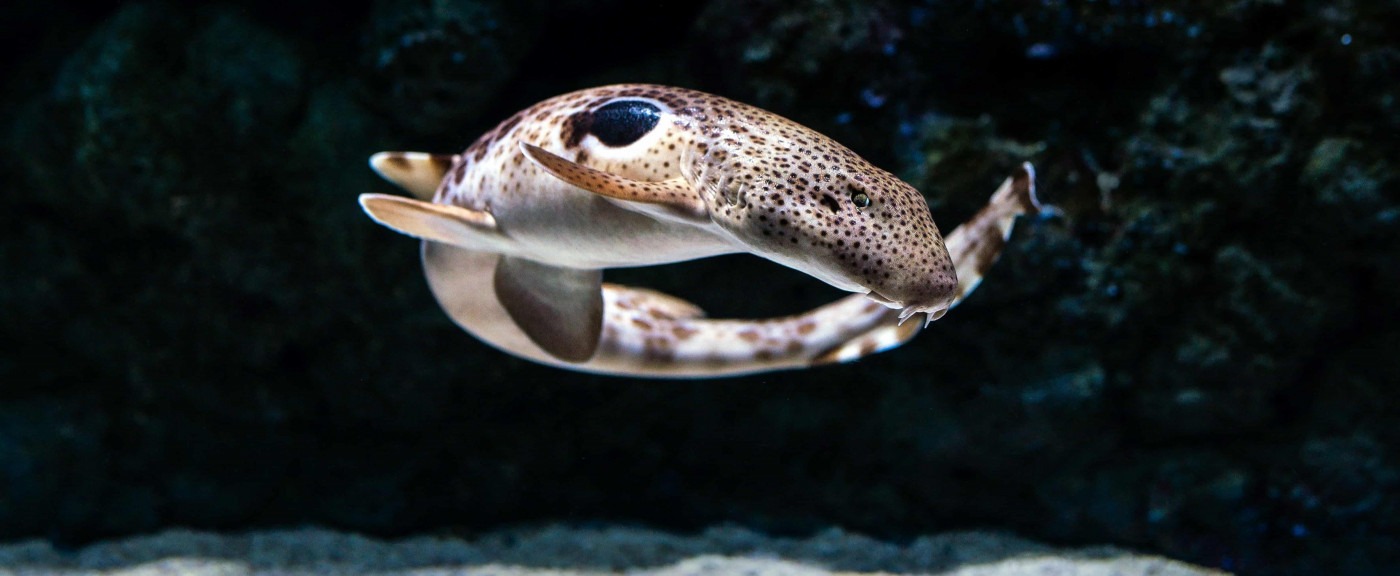Climate change and evolution are making some sharks walk on land
In 1975, the first summer blockbuster hit cinema screens – that film was Steven Spielberg’s Jaws, and ever since, people have been scared to go into the water for fear they may encounter a shark. But now, it appears that even staying out of the water may not be enough to keep away from the animals, as a team of scientists are studying a shark that is evolving to walk on land. It’s an evolution that has been described as “breaking all the rules of survival”, and observing this ability is likely to provide us with worrying knowledge about climate change.
Scientists at Florida Atlantic University have been studying a particular species of shark, the epaulette – so-called because it has a large black spot on its side that resembles an epaulet. The sharks live in reef flats around Australia’s Southern Great Barrier Reef, and this is a habitat that can become completely isolated by the outgoing tide. As a result, the epaulette sharks can move with their fins in a crawling motion, and cope with oxygen for up to two hours, both stunning evolutionary changes.
[…] it appears that even staying out of the water may not be enough to keep away from the animals
The shark faces a number of threats to its survival. The shallow waters it inhabits warm significantly during summer during a low tide, so it must endure the harsh temperature – if it swims to deeper waters, it is vulnerable to larger predators. They can use their fins to walk – this ability helps them help hide in the reef and avoid being spotted and picked up by aerial predators, and to crawl over exposed coral reef to get into another tide pool. There’s also fluctuating oxygen levels in its habitat – in the day, the levels are dangerously high, and at night, they’re dangerously low.
Jodie Rummer, a marine biology professor at James Cook University in Australia, says: “These sharks don’t really have a reprieve. We talk about them as the toughest shark on the Great Barrier Reef. They don’t look so tough – not super bitey and super ferocious – but physiologically, they have got to be tough.”
In a piece published in the Integrative and Comparative Biology science journal, a team from Florida Atlantic University researched the early life development of the shark, keeping eggs in an environment that simulates what climate conditions could be like in the mid-to-late 21st century. The idea of the experiment was both to examine how walking and swimming abilities change in an epaulette shark’s early development, and to see how the animals may respond to changing conditions. When newly hatched, the sharks survive from an internalised yolk sac, which gives the new-borns a bulging belly – but body shape makes little difference as to how fast the shark can move.
“These sharks don’t really have a reprieve. […] physiologically, they have got to be tough”.
–Jodie Rummer, marine biology professor at James Cook University, Australia
As to the changing conditions, scientists were very alarmed by the impact. The epaulette sharks were much smaller, and hatching quicker. The famous black spots began to discolour, and the yolk from which the sharks draw their energy depleted much faster than usual, forcing the sharks to learn how to forage for food much earlier in life. These are all radical changes for a shark that is famously able to deal with quite hard conditions. As Rummer notes: “If we find these conditions are too stressful for this shark, that’s a really big warning system for the rest of the organisms on the reef, and definitely other shark species as well.”
The fate of the reef’s ecosystem is tied to the independent well-being of the epaulette shark, and it indicates that the whole ecology may face major difficulties if the climate changes substantially. Researchers hoped that they can learn more about what, if any, genetic adaptations the shark will make to survive under warmer conditions, but that is work that will require generations. For now, Rummer hopes that the work will raise awareness: “What we really want is for this beautiful, quirky, walking shark that’s so tough, but not what you would expect, to be sort of that beacon for climate change education.”

Comments